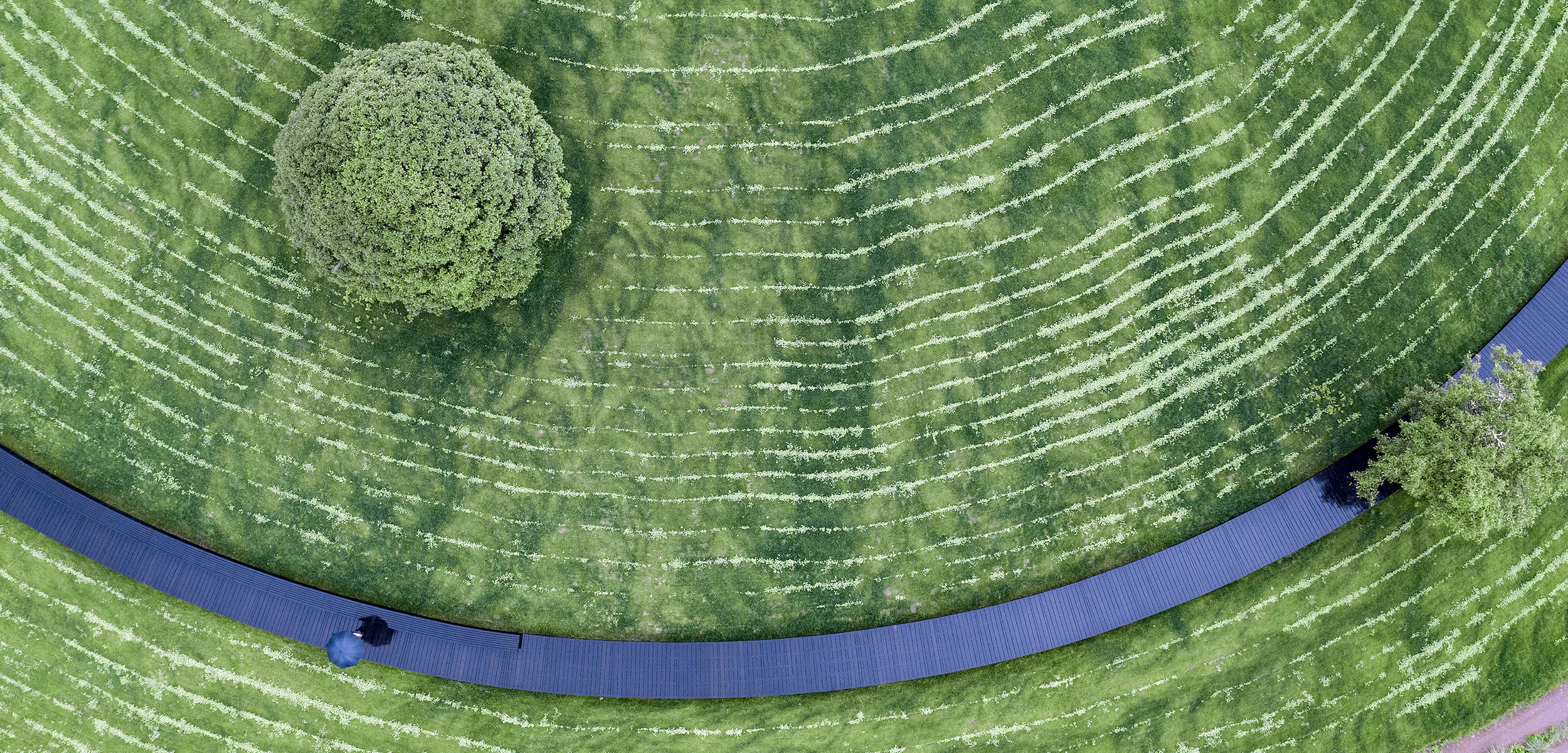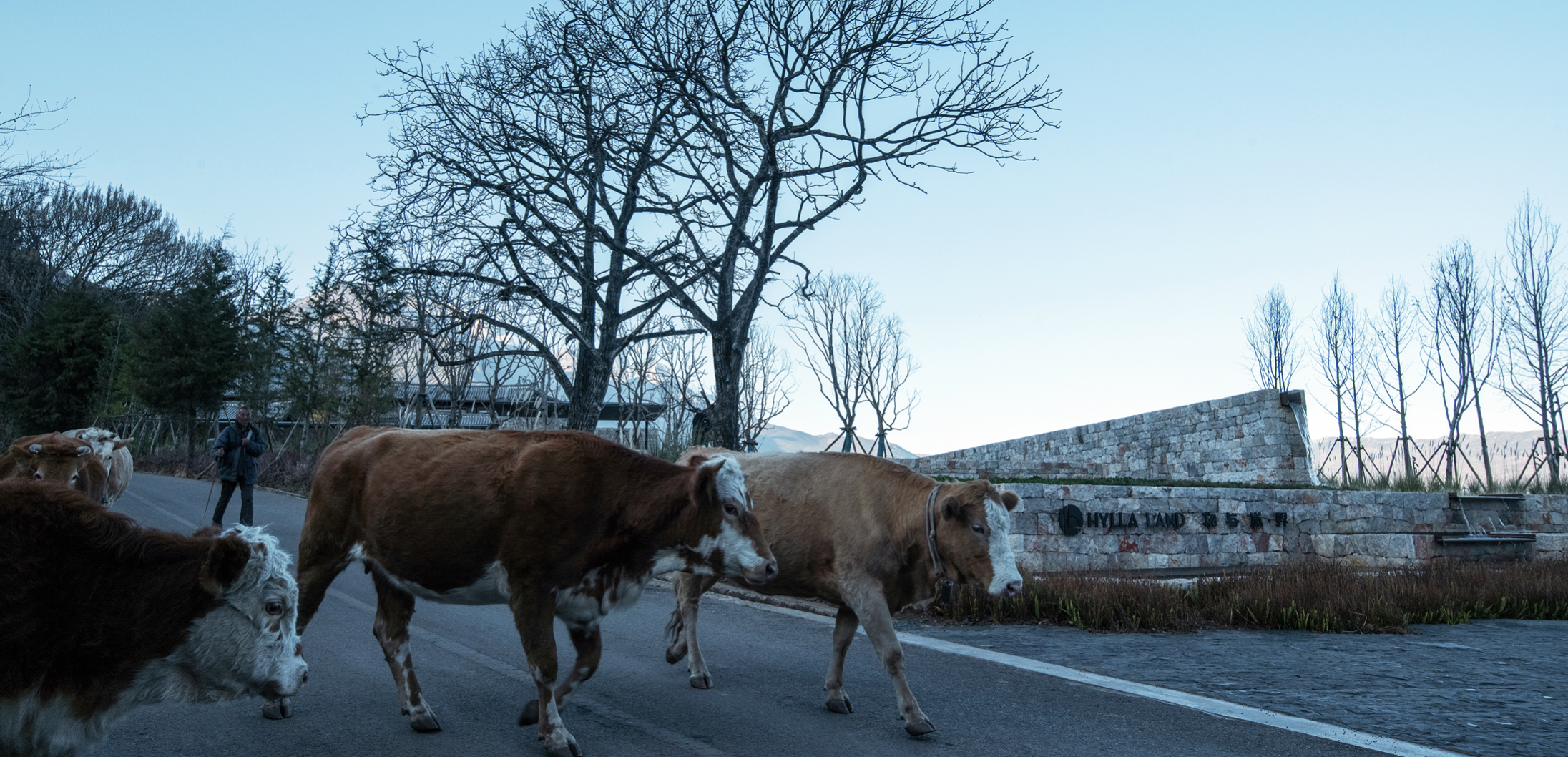Hylla Aline Garden in the Himalayas
Z’Scape have designed a garden to celebrate Lijiang Yunnan’s native plants and indigenous culture.
Hylla Aline Garden forms part of the Lijiang Hylla Vintage Hotel complex at the foothills of the Jade Dragon Snow Mountain, within the Pan-Himalaya region of China.
The Hylla Aline Gardens are part of the Lijiang Hylla Vintage Hotel complex at the foothills of the Jade Dragon Snow Mountain.
The Naxi village was abandoned for several decades, and recently renovated to form the basis of a hotel and garden covering approximately four hectares.
The site is entered along a path flanked by a white stone wall, stepping down onto a wooden boardwalk that snakes across the lawn towards a central oak tree. This alpine lawn is used as a gathering space for events, and provides the best views of the Jade Dragon Snow Mountain and town of Baisha.
Lijiang is an ancient city built with stones, so stone is an important Naxi element.
A central Xupai tree is key to evoking the Naxi spirit. In this garden, it is an oak which has stood for hundreds of years. This tree would have been a sacred feature of the original village, and it was believed trees like this would help to protect the land.
The Z’Scape design team left the tree untouched, using it as a focal point in their culturally-sensitive landscape.
The Z’Scape design celebrates Lijiang Yunnan’s native plants and indigenous culture.
Most new plants have been sourced from nearby nurseries. Indigenous alpine plants improve the ecosystem while new ornamental plants enhance landscape richness. Attention has been paid to reestablishing alpine plants that provide a wildlife habitat and connect to the Naxi people.
Local stones sourced within 50-kilometres have been widely used in the development’s walls, paving and water features. Lijiang is an ancient city built with stones, so stone is an important Naxi element.
The site is entered along a path flanked by a white stone wall.
Some walls are equipped with water features designed to reference the Naxi historic ‘three well’ irrigation system. This would channel melted snow from the mountains into an upper well used for drinking water, a middle well used for cleaning fruit and vegetables, a lower well for washing clothes, with the outflow used to irrigate surrounding farmland.
Two water features in the Hylla Alpine Garden were informed by this irrigation system, with long channels set into stone walls. Water flows along the channels and pours down into stepped pools representing the three wells.
Most new plants have been sourced from nearby nurseries.
The development has been created with minimal intervention, and without heavy machinery, in order to preserve the existing ecosystem.
The large forest preserved in the north and west of the garden contains oak trees, sumac, paulownia and Yunnan pine trees, while introduced native plants such as rhododendron, irises and euphorbia reinforce the site’s unique alpine ecology.
Two water features have been created by the gardens’ iirrigation system.
All stone and timber elements have been crafted by locals using traditional techniques, thus retaining a sense of Naxi identity and cultural uniqueness.
Hylla Aline Garden invites visitors to explore the local culture, while offering a space of comfort, solitude and peace.
The Naxi village was abandoned for several decades.






